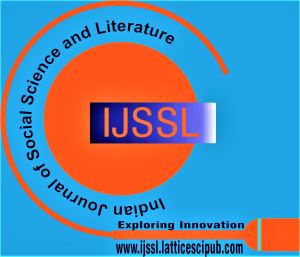![]()
Study of Online Gaming on Adolescent through the Lens of G. Stanley Hall’s “Storm and Stress”
B. Chibby Muthu1, Archana Hajong2
1B Chibby Muthu, Scholar, Department of Sociology and Social Work, Annamalai University, Chidambaram (Tamil Nadu), India.
2Archana Hajong, Scholar, Department of Education, Annamalai University, Chidambaram (Tamil Nadu), India.
Manuscript received on 05 April 2025 | First Revised Manuscript received on 12 April 2025 | Second Revised Manuscript received on 20 May 2025 | Manuscript Accepted on 15 June 2025 | Manuscript published on 30 June 2025 | PP: 33-40 | Volume-4 Issue-4, June 2025 | Retrieval Number: 100.1/ijssl.D117604040625 | DOI: 10.54105/ijssl.D1176.04040625
Open Access | Ethics and Policies | Cite | Zenodo | OJS | Indexing and Abstracting
© The Authors. Published by Lattice Science Publication (LSP). This is an open-access article under the CC-BY-NC-ND license (http://creativecommons.org/licenses/by-nc-nd/4.0/)
Abstract: This study examines the impact of online gaming on adolescent development through G. Stanley Hall’s “storm and stress” framework, highlighting emotional turbulence, risk-taking behaviours, and identity confusion among youth. Adolescence, as described by Hall, is marked by heightened emotional sensitivity, impulsivity, and identity struggles, traits that contemporary online gaming environments significantly amplify. Analysis of detailed case studies involving individuals aged 13 to 28 demonstrates that excessive gaming can provoke emotional extremes, notably “gamer rage,” triggered by immediate factors like in-game failures and broader contextual stressors, including parental restrictions and daily life frustrations. This emotional turbulence often manifests as irritability, aggression, and strained family relationships, intensified by the immersive and competitive nature of gaming. The rapid reward systems embedded in online games reinforce adolescent impulsivity, leading to increased experimentation and risky behaviours both virtually and in real life, such as academic neglect and susceptibility to peer-driven behaviours, including substance use. The study also identifies the complex dynamics of identity formation as adolescents navigate multiple virtual personas and social hierarchies online, thereby complicating their real-world self-concept. While temporarily boosting self-esteem, virtual achievements can dangerously blur distinctions between digital validation and genuine personal worth. To mitigate these risks, the research emphasises the need for collaborative strategies that involve families, educational institutions, policymakers, and mental health professionals. Effective interventions should cultivate adolescents’ selfregulation, balanced gaming habits, and clear boundary-setting to enhance emotional resilience, responsible decision-making, and stable identity formation. Recognising gaming’s potential as a developmental risk and a constructive exploration tool is essential for fostering healthier adolescent development.
Keywords: Online Gaming, Emotional Turbulence, Risk-taking Behaviour, Identity Formation, Virtual Identity, Adolescent Development.
Scope of the Article: Psychology
